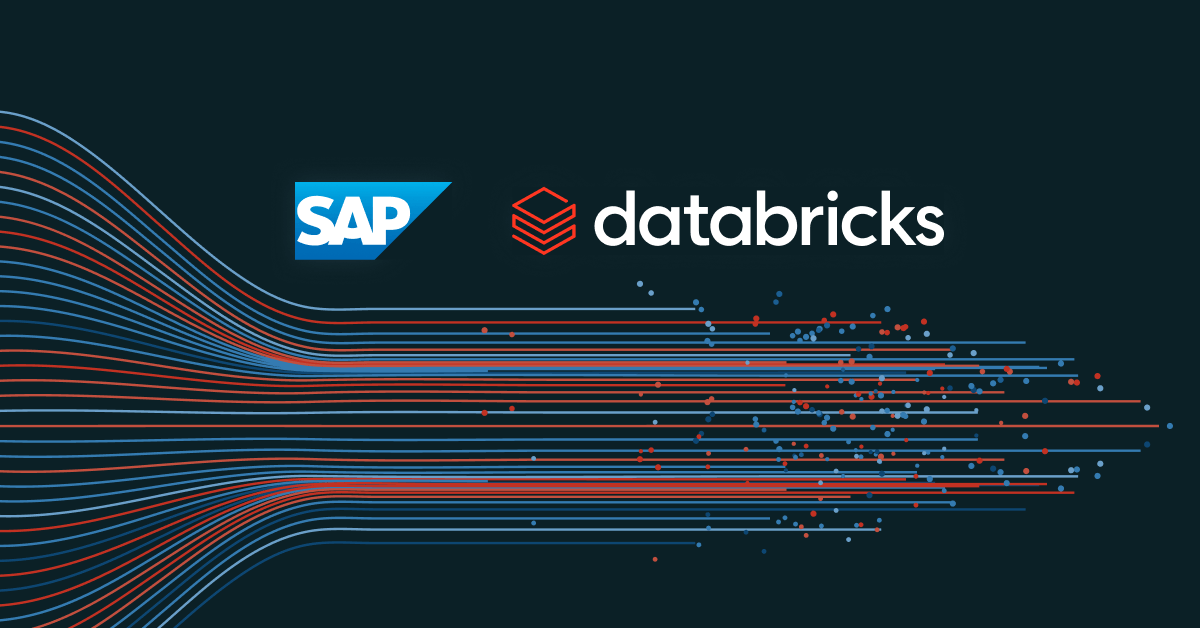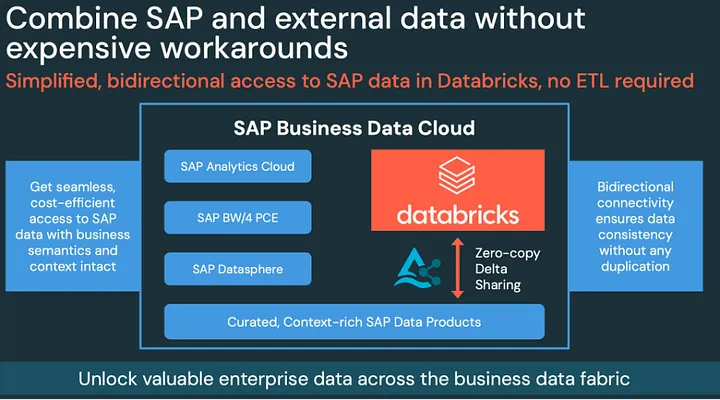
by Nathan Liston | August 29, 2025
Data is the cornerstone of today’s modern enterprise. Without it, you can’t drive digital transformation or artificial intelligence (AI). This is why organizations who are staying ahead of the curve are constantly looking for new ways to utilize their data in transformative ways to drive more opportunities and revenue.
A recent groundbreaking partnership between industry giants SAP Databricks Integration paves the way for organizations to do just this and more.
Through the integration of Databricks within the SAP Business Data Cloud, this reshapes how organizations can manage their data, leverage AI, and execute modern data strategies.
Why the SAP and Databricks Partnership Matters
SAP has been a mainstay of enterprise operations for decades through programs like ERP (SAP S/4HANA), procurement (Ariba), HR (SuccessFactors), and travel management (Concur). Yet, despite its heavy usage among the majority of Fortune 500 companies, SAP’s data has typically remained siloed. This has crippled its ability to drive AI and analytics at scale. Over the years, Databricks has positioned itself as the leader in unified data analytics by combining data engineering, warehousing, machine learning, and governance into its Lakehouse Platform.
By joining these two powerful forces together, this addresses a long-standing pain point: the complexity of integrating SAP’s context-rich, semantically structured data with modern data ecosystems. The SAP and Databricks partnership means that businesses can now remove the barriers that have long kept them from merging their SAP data with external datasets to power everything from AI agent systems to predictive analytics.

What the SAP Databricks Integration Means For Your Business
There are numerous benefits to the SAP and Databricks integration. Here are just a few of the ways we believe this partnership can have a positive impact on your organization:
Seamless connectivity through bi-directional data syncing
Traditionally, businesses have relied on various methods to connect siloed systems—whether through APIs, integration hubs, or complex data extraction processes. Now, you no longer have to worry about these types of manual processes. One of the most powerful aspects of the SAP Databricks partnership is the bi-directional integration between SAP’s ERP systems and Databricks’ data intelligence platform. This bi-directional integration provides seamless connectivity between disparate systems and data sources, unlocking new potential for cross-functional collaboration and data-driven decision-making.
Integrating AI and machine learning within the business workflow
As businesses increasingly look to increase the role AI plays in its business strategy, the SAP Databricks partnership helps make this possible through generative AI, machine learning (ML) and AI-powered workflow automation directly in the SAP ecosystem. This new feature allows businesses to automate processes, predict outcomes, and optimize operations in real-time, all while reducing the complexity traditionally associated with integrating AI into business workflows.
Easier access to external data and analytics
One major advantage to the SAP Databricks partnership is the ability to integrate external data sources with your SAP data effortlessly. Through tools like Databricks Delta Sharing and the Databricks Marketplace, businesses can incorporate third-party data, open-source models and commercial AI/ML models directly into their data ecosystem. By bringing in external data, businesses can gain new insights from diverse data sources, which can further enhance decision-making. This broader scope of data integration enables businesses to bring together internal and external data sources, whether from external partners, the cloud, or public datasets, for better insights and enhanced analytics.
Using data to drive revenue
The SAP Databricks integration marks a pivotal shift in the business world—where organizations are now looking for ways to use their data to drive revenue. Through real-time analytics, AI-driven decision-making and predictive insights, data has gone from being a supportive function to now a key driver of business growth.
Through the integration of SAP and Databricks, businesses can access real-time data insights that directly affect the bottom line. This creates new opportunities, enhances processes, and allows for faster innovation.
Removing data silos with a semantic layer
One of the challenges many organizations have faced is integrating and understanding data across different functions and departments. With the SAP Databricks integration, this problem no longer exists by enabling the preservation of data semantics across structured and unstructured data. By allowing the data to retain its business context, teams across various functions—HR, finance, IT, and supply chain—can take advantage of insights from a unified source. By allowing the data to retain its business context, teams across various functions—HR, finance, IT, and supply chain—can take advantage of insights from a unified source now that SAP data and other company data can easily be in one location for the first time
With this semantic layer in place, organizations can gain a more comprehensive view of their operations, fostering collaboration and data-driven decision-making across all departments.
Unified governance to better manage data and compliance
Governance is an essential component of any data initiative, especially when it comes to complex environments with internal and external data sources. The Unity Catalog is a key feature of the SAP Databricks integration, providing a unified governance layer. This helps ensure that data access, security, and compliance standards are met across both SAP and non-SAP environments.
Unity Catalog provides businesses with centralized control over who can access and manage data, streamlining compliance with industry regulations and improving data security across the organization.
Faster decision making through near-real-time analytics
Today’s fast-paced business environment requires that businesses make data-driven decisions in near-real-time. Now, you can utilize SAP and Databricks to combine transactional data with Databricks’ streaming and model endpoint capabilities, allowing for near-real-time analytics. This means businesses can quickly adjust to changing conditions by making quicker, more informed decisions.
How CleanSlate Helps You Seamlessly Transition to SAP Databricks
The SAP and Databricks partnership highlights a shift businesses are making from traditional siloed databases to integrated data intelligence platforms that help bring data and business operations together. This is critical for businesses who are looking to remain competitive in our rapidly changing, data-driven world. Allowing organizations to leverage their SAP data with other critical company data, for the first time, opens up a whole new world for data value realization.
From AI and machine learning to data lakehouses and generative AI, CleanSlate has the experience, tools, and resources to guide businesses through this exciting transformation.
Let us help you leverage the power of SAP Databricks to drive innovation, efficiency, and success for your business in the data-driven future. Contact us to learn more about how we help organizations like yours.
CleanSlate is focused on crafting tailored, cutting-edge cloud–native data and AI solutions that empower businesses with enhanced flexibility, accelerated innovation, and the strength to thrive in an ever-changing future.

Nathan Liston is the Sr. Director of
Data and AI at CleanSlate Technology Group.
